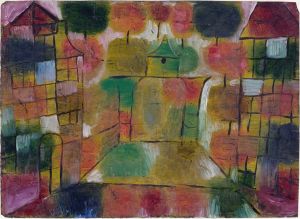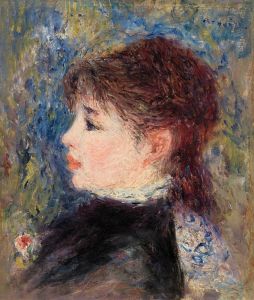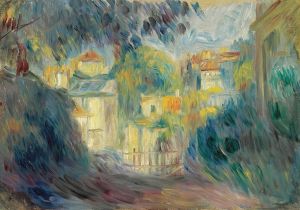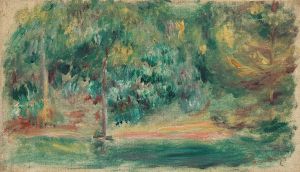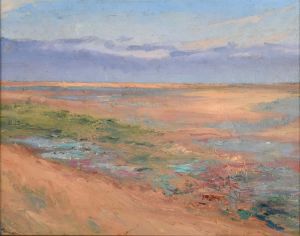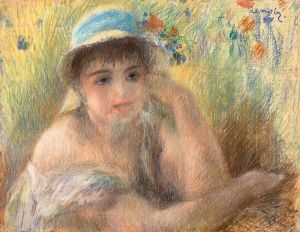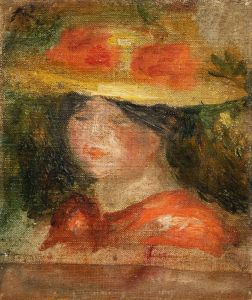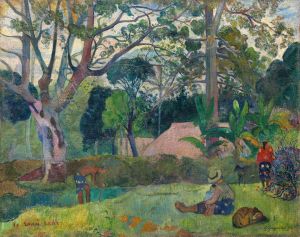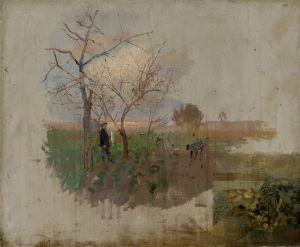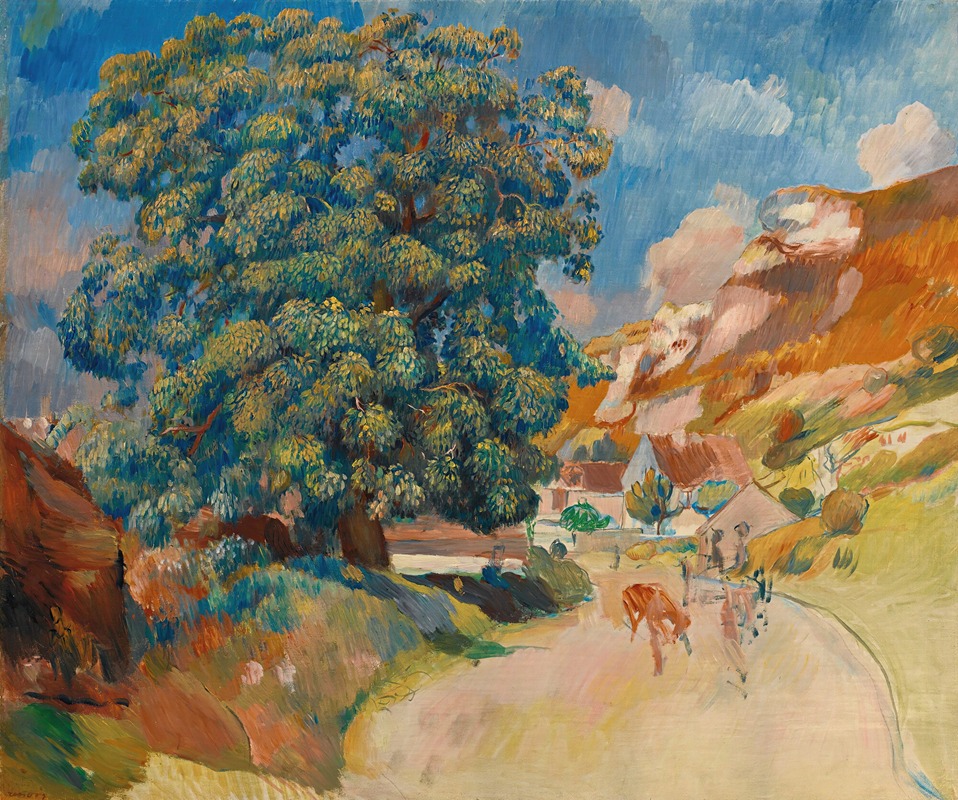
Le Grand Arbre Au Bord De La Route
A hand-painted replica of Pierre-Auguste Renoir’s masterpiece Le Grand Arbre Au Bord De La Route, meticulously crafted by professional artists to capture the true essence of the original. Each piece is created with museum-quality canvas and rare mineral pigments, carefully painted by experienced artists with delicate brushstrokes and rich, layered colors to perfectly recreate the texture of the original artwork. Unlike machine-printed reproductions, this hand-painted version brings the painting to life, infused with the artist’s emotions and skill in every stroke. Whether for personal collection or home decoration, it instantly elevates the artistic atmosphere of any space.
Pierre-Auguste Renoir, a prominent French artist and a leading figure in the development of the Impressionist style, is renowned for his vibrant light and saturated color, often focusing on people in intimate and candid compositions. However, his landscape paintings, though less frequently discussed, also hold significant value in understanding his artistic evolution and the broader Impressionist movement. One such work is "Le Grand Arbre Au Bord De La Route" (The Large Tree by the Road).
"Le Grand Arbre Au Bord De La Route" is a testament to Renoir's ability to capture the essence of nature with a delicate interplay of light and shadow. While specific details about the painting's creation, such as the exact date and location, are not extensively documented, it is consistent with Renoir's style during the late 19th century when he was actively exploring landscapes. This period was marked by his frequent travels to the French countryside, where he found inspiration in the natural beauty and tranquility of rural settings.
The painting likely features a large tree, a common motif in Renoir's landscapes, symbolizing nature's grandeur and resilience. The road beside the tree suggests a journey or passage, a theme that resonates with the Impressionist fascination with capturing moments in time. Renoir's brushwork in such paintings is typically loose and fluid, allowing the colors to blend softly into one another, creating a sense of movement and life.
Renoir's landscapes often reflect his interest in the effects of light and atmosphere, a hallmark of Impressionism. In "Le Grand Arbre Au Bord De La Route," one can imagine the dappled sunlight filtering through the leaves, casting intricate patterns on the ground. This play of light not only enhances the visual appeal of the painting but also evokes a sense of peace and serenity, inviting the viewer to pause and appreciate the simple beauty of the natural world.
The palette used in Renoir's landscapes is usually warm and inviting, with rich greens, earthy browns, and soft blues. These colors are applied with a sensitivity that captures the changing seasons and times of day, reflecting Renoir's keen observation of his surroundings. His landscapes, including "Le Grand Arbre Au Bord De La Route," are less about topographical accuracy and more about conveying the mood and atmosphere of the scene.
Renoir's approach to landscapes was influenced by his contemporaries, such as Claude Monet and Camille Pissarro, who were also exploring the effects of light and color in their work. However, Renoir's landscapes are distinct in their focus on harmony and balance, often incorporating human elements or structures that suggest a connection between people and nature.
While "Le Grand Arbre Au Bord De La Route" may not be as widely recognized as some of Renoir's other works, it nonetheless contributes to the rich tapestry of his artistic legacy. It exemplifies his mastery of color and light, as well as his ability to evoke emotion through seemingly simple scenes. This painting, like many of Renoir's landscapes, invites viewers to step into a moment of tranquility and reflect on the beauty of the world around them.
In summary, "Le Grand Arbre Au Bord De La Route" is a fine example of Pierre-Auguste Renoir's landscape painting, showcasing his Impressionist techniques and his deep appreciation for nature. Through his skillful use of color and light, Renoir captures the essence of a serene moment, offering a glimpse into the peaceful coexistence of humanity and the natural world.





